You’re scrolling through job listings, feeling hopeful yet overwhelmed. Resumes, cover letters, endless LinkedIn profiles… ugh! But what if you had something that made employers pause and say, “I need this person!”? That’s the power of personal branding for job seekers.
It’s not about creating a fake persona or turning yourself into a walking advertisement. Nope. It’s about showing the world who you are, what you can do, and why you’re awesome.
Think of it as a beacon in a sea of job seekers. When your personal brand shines bright, recruiters take notice. They see more than just bullet points on a resume, they see you. Now, let’s get into the juicy stuff. Here’s how you can build an irresistible personal brand that shouts, “Hire me!”
Step 1: Know Thyself (Yep, It Starts Here)

Alright, before you dive headfirst into crafting your LinkedIn bio like you’re the next Shakespeare, let’s hit the brakes.
Why? Because personal branding starts with understanding you. Not some idealized, “perfect” version, but the real you. The quirks, the strengths, the values, all of it.
So, grab a notebook (or your phone’s notes app) and answer these questions like you’re writing a letter to yourself. No pressure, no judgment, just honesty.
(i) What Are My Strengths?
Your strengths aren’t just what you’re good at. They’re what people rely on you for.
- Are you the problem-solver in your friend group?
- The go-to person for calming office chaos?
- The one who’s always three steps ahead in planning?
Maybe you’re amazing at simplifying complex ideas. That’s a strength. Or you’re a master at organizing chaotic data into clear insights. That’s gold.
Ask trusted friends, family, or colleagues: “What’s one thing you think I’m really good at?” Their answers may surprise you.
(ii) What Do People Always Compliment Me On?
Compliments aren’t random, they highlight what makes you shine.
- Do coworkers often say, “Wow, you explain things so clearly!”?
- Maybe people love your positive energy or leadership skills.
If multiple people have told you, “You’re such a great listener,” it’s not luck, it’s a superpower.
Don’t brush off compliments. Write them down! These are clues to what makes you memorable.
(iii) What Skills Make Me Feel Confident and Proud?
Forget what’s “in demand.” Focus on the skills that make you think: Yeah, I’m really good at this.
- Are you a creative wizard?
- A coding genius?
- A persuasive speaker?
If crafting compelling PowerPoint presentations makes you feel like a rockstar, that’s a branding strength.
Don’t limit this to work skills. Your talent for baking, DIY crafts, or storytelling could be part of your brand too.
(iv) What Values Do I Hold Dear?
Values shape how you work, why you work, and who you want to work with.
- Do you thrive in collaborative environments?
- Are honesty and transparency non-negotiable for you?
- Does creativity fuel your best work?
If you value kindness and empathy, you may naturally thrive in roles where mentorship or customer support matters.
Your values will define your brand tone. When it comes to personal branding for job seekers, someone who values creativity may build a bold and colorful brand, while someone who values precision may build a structured, organized presence.
(v) How Can I Solve Problems for Others?
This one’s HUGE. Your personal brand is only impactful if it shows how you help others.
- Can you simplify tech jargon for beginners?
- Are you great at motivating teams during stressful projects?
- Do you excel at crafting persuasive resumes?
If you’re a graphic designer, your brand isn’t just “I create cool designs.” It’s “I help businesses tell powerful visual stories.”
The key to standing out? Focus less on what you do and more on how you make life easier for others.
Step 2: Define Your Audience (Yep, It’s All About Knowing Who’s Watching)
Before you start sprinkling buzzwords into your LinkedIn bio like confetti, pause for a second. Because a powerful personal brand isn’t just about you, it’s about speaking directly to the people you want to connect with.

(i) Who Am I Trying to Impress?
Your LinkedIn bio isn’t one-size-fits-all. Different audiences care about different things.
a) Employers
They want to know what makes you dependable, skilled, and valuable. Focus on achievements, problem-solving skills, and moments where you made a big impact.
b) Clients
They’re not just hiring you, they’re trusting you to deliver results. Showcase how you can solve their biggest pain points. Are you the social media mastermind who skyrockets engagement? The writer who crafts copy that drives sales? Spell it out.
c) Fellow Creatives
This crowd craves authenticity. Show your personality, your creative process, and what makes your work stand out. Don’t hold back, share your quirks, your bold ideas, and your unique style.
Imagine you’re a digital marketing expert. If you’re targeting startups, highlight your adaptability, fast-paced thinking, and growth hacking skills. If you’re appealing to corporate clients, emphasize your data-driven strategies, leadership skills, and structured methods.
The clearer you are about your audience, the easier it is to write a bio that makes them think, “Yes! This is exactly who I need!”
(ii) What Problems Does My Audience Face?
Your audience doesn’t just care about what you do, they care about how you can help them.
- Are they overwhelmed by confusing marketing strategies?
- Struggling to grow their business online?
- Desperate for someone who can simplify complex data?
If you’re a content writer targeting SaaS startups, don’t just say, “I write blogs.” Say, “I create SEO-driven content that turns website visitors into loyal customers.”
Write down your audience’s pain points. Then, craft your bio to position yourself as the solution to those struggles.
(iii) What Kind of Language Will Resonate with Them?
The way you speak matters.
- Targeting corporate professionals? Use clear, formal language that emphasizes results and expertise.
- Connecting with creative entrepreneurs? Go for a casual, conversational tone that shows your personality.
- Reaching busy CEOs? Get straight to the point, no fluff, no filler.
If your audience is fast-moving tech founders, you might say: “I help startups scale faster with smart digital strategies that convert.”
For creative freelancers, you might say: “I turn wild ideas into standout designs that leave a lasting impression.”
Imagine you’re talking to your ideal client or employer over coffee. What would you say to grab their attention? Start there, and draw inspiration from personal branding for job seekers examples that showcase authenticity, clarity, and confidence.
(iv) What Makes Me Memorable to This Audience?
People remember those who stand out. What’s your edge?
- Are you the data whiz who makes analytics fun?
- The creative thinker who always sees solutions others miss?
- The calm voice of reason when everything’s falling apart?
Instead of saying, “I’m an IT professional,” say: “I’m the tech guru who turns digital chaos into smooth-running systems.”
When it comes to personal branding for job seekers, focus on the unique value you bring, the skills, personality, and experiences that make you impossible to forget.
Step 3: Craft Your “Elevator Pitch” (Yep, It’s ShowTime)
Picture this: You step into an elevator, and boom, you’re face to face with the CEO of your dream company.
You’ve got 30 seconds. That’s it. What do you say?
Your elevator pitch is your golden ticket, a brief, memorable way to showcase who you are, what you do, and why you’re awesome. So, let’s break it down.
(i) Start with What You Do (Keep It Clear)
Skip the fancy jargon. Start with a simple, powerful statement.
- “I’m a social media strategist who helps brands grow their online presence.”
- “I’m a graphic designer who transforms ideas into visuals that grab attention.”
- “I’m a data analyst who turns complex numbers into actionable insights.”
Don’t just say what you are, say how you bring value.
(ii) Highlight What Makes You Stand Out (Keep It Memorable)
What’s your edge? Why should they care?
- “With five years of experience, I specialize in creating viral campaigns that boost engagement.”
- “I combine creativity with data insights to design strategies that actually convert.”
- “I simplify technical jargon so businesses can make smarter decisions.”
Use words that pack a punch, “transform,” “boost,” “simplify,” “drive.” They stick.
(iii) End with a Hook (Keep It You)
Leave them wanting more. Add a memorable detail or invite them to connect.
- “I’d love to hear how your team approaches content marketing!”
- “I’m always happy to brainstorm ideas over coffee.”
- “If you’re ever looking for someone to turn data into decisions, let me know!”
Sound confident, but not rehearsed. Be conversational, like you’re chatting with a friend.
(iv) Putting It All Together (Your Winning Pitch)
“I’m a content marketer who helps tech startups create clear, engaging content that turns readers into loyal customers. With five years of experience and a knack for storytelling, I make brands shine. If you’re ever looking for fresh ideas, I’d love to chat!”
Clear. Concise. Impressive.
Now go down that elevator ride.
Step 4: Build Your Digital Presence (Yep, It’s Time to Shine)

Now that you’ve nailed your personal brand, it’s time to show it off. But where?
Don’t just blast your message everywhere. Instead, pick the platforms that match your goals, and own them.
(i) LinkedIn: Your Digital Resume (and More!)
Networking, job hunting, and sharing achievements.
- Showcase your skills.
- Highlight career milestones.
- Post insightful content to position yourself as an industry pro.
Treat your LinkedIn profile like a landing page. Strong headline. Impactful summary. Killer achievements.
(ii) Twitter: The Idea Playground
Quick insights, connecting with thought leaders, and sharing news.
- Drop knowledge bombs in 280 characters.
- Engage in industry conversations.
- Show your personality, humor wins here!
Follow key players in your field and jump into trending discussions.
(iii) Instagram: Visual Storytelling HQ
Creative portfolios, behind-the-scenes content, and personal branding.
- Showcase designs, projects, or creative wins.
- Use Stories to share your journey.
- Build connections through hashtags and reels.
Authenticity sells here. Don’t just post, tell your story.
(iv) Personal Website: Your Digital HQ
Owning your narrative and showcasing everything in one place.
- Create a portfolio that wows.
- Showcase testimonials, achievements, and services.
- Build SEO power to help people find you.
Treat your website like your personal “About Me” page, but cooler.
Step 5: Share Content (Your Visibility Game-Changer)
Alright, you’ve built your digital presence. Now, let’s fill it with content that makes people stop scrolling. Content is how you prove you’re not just talking, you’re showing what you know.

(i) Showcase Your Skills in Action
Think of your content as mini case studies, quick, clear examples of your expertise.
- Coding Whiz? Post about your latest project. Show what you built, how you built it, and what you learned.
- Customer Service Star? Share tips on calming angry clients or resolving conflicts like a pro.
- Writing Guru? Drop mini writing hacks that help others communicate better.
Don’t just tell people what you can do, show them. Screenshots, stories, and step-by-step guides work wonders.
(ii) Add Personality: Seriously, Be You
People follow people, not robots. Share your wins, failures, and even funny moments.
- Post about that time your code broke the entire site (but you saved the day).
- Talk about a customer meltdown you turned into a 5-star review.
- Share a “win of the week”, big or small.
Vulnerability builds trust. Don’t be afraid to show the real you.
(iii) Stay Consistent (Without Overdoing It)
Showing up regularly keeps you on people’s radar, but spamming them? Not cool.
- Post once or twice a week on LinkedIn.
- Tweet 3-5 times a week (or daily if you’re feeling spicy).
- Share Instagram Stories to keep things casual and fun.
Quality > Quantity. Posting less but better wins every time.
(iv) Engage, Don’t Just Broadcast
Posting is step one. Step two? Actually talking to people.
- Respond to comments.
- Engage with others’ posts.
- Ask questions and start conversations.
People remember you when you listen as much as you share.
(v) Mix It Up: Variety Wins
Don’t post the same thing every time. Keep your audience guessing (and engaged) with:
- How-to guides
- Industry insights
- Personal stories
- Hot takes on trending topics
Aim for a mix of educational, entertaining, and inspiring content.
Step 6: Showcase Your Wins (But Keep It Cool)
Look, sharing your wins isn’t just okay, it’s essential. But there’s a fine line between celebrating and sounding like a walking trophy shelf.
The trick? Be humble, relatable, and meaningful.

(i) Share the Story, Not Just the Achievement
Don’t just post, “I won an award!”, tell us what it means.
- What challenge did you overcome?
- What skills did you use?
- How will this achievement help you (and others)?
Example:
❌ “Just completed my first marathon!”
✅ “Just finished my first marathon! Training taught me that consistency beats motivation. Excited to apply that mindset to my next big project!”
(ii) Focus on the Lesson, Not the Ego
People connect more with your journey than the finish line.
- Did you learn patience while coding that app?
- Did failing a few times make your win even sweeter?
- Did teamwork or mentorship play a role?
Example:
❌ “Won the ‘Top Sales Performer’ award!”
✅ “Proud to be recognized as ‘Top Sales Performer’ this quarter! Building stronger client relationships was the game-changer, asking more questions made all the difference.”
(iii) Tie It Back to Others
Show how your win benefits your team, clients, or community.
- Did your new skill help you train coworkers?
- Will your certification improve your customer service?
- Can your story inspire someone else to try?
Example:
❌ “Earned my PMP certification!”
✅ “Just earned my PMP certification! Excited to help my team manage projects more smoothly, and avoid those ‘last-minute panic’ moments.”
- Keep It Real (Nobody Likes a Robot)
Feel it. Be real. Stand tall. Just skip the corporate buzzwords.
- “Pumped!” > “Thrilled to announce…”
- “Finally nailed it!” > “Successfully achieved…”
Example:
✅ “YES! Just passed my AWS certification! Huge thanks to my mentor for those late-night study sessions, couldn’t have done it without you!”
Step 7: Personal branding for job seekers examples, Inspiration, Not Imitation
Want to master personal branding? The best lessons come from those who’ve done it brilliantly. Here’s how a few pros turned their presence into pure gold.
(i) Gary Vaynerchuk: Raw, Real, Relentless
Gary Vaynerchuk’s personal brand is powerful because of his unfiltered, no-nonsense style. He’s loud, energetic, and brutally honest, and that’s exactly what makes him memorable.
Key Strategies:
- Uses a casual, conversational tone that feels relatable.
- Shares real-life stories and experiences to connect with his audience.
- Focuses on practical advice rather than polished, theoretical ideas.
- Constantly engages with his followers through comments, Q&A sessions, and social media.
Embrace your personality. Being raw and authentic builds stronger connections, a key strategy in personal branding for job seekers examples that truly stand out.
(ii) Maya Washington: Storytelling With Purpose
Maya Washington’s brand thrives on meaningful content that blends creativity with social advocacy. Her personal stories and powerful messages resonate deeply with her audience.
Key Strategies:
- Shares her values openly, making her content feel personal and genuine.
- Focuses on storytelling to connect emotionally with her audience.
- Uses her platform to promote social causes, which builds trust and respect.
- Balances creativity with educational content to inspire and inform.
Share your values and experiences. People connect with authenticity and purpose.
(iii) Chris Do: The King of Value-First Content
Chris Do’s strategy is all about sharing knowledge. He’s built his reputation by consistently providing value through educational content.
Key Strategies:
- Focuses on teaching rather than self-promotion.
- Shares practical tips, insights, and strategies to help his audience grow.
- Uses engaging video content to simplify complex topics.
- Builds trust by delivering consistent value without asking for immediate returns.
Generosity builds loyalty. Sharing useful knowledge not only helps others but also strengthens your personal branding for job seekers by positioning you as an expert in your field.
Step 8: Embrace the Journey, Growth Takes Time
Let’s be honest, building your personal brand can feel awkward at first.
You’ll write a post, stare at it for 20 minutes, and wonder, Does this even make sense? Or worse, you’ll hit “Post” and immediately regret it.
That’s okay. It’s part of the process.
Here’s the truth: Every great personal brand started with imperfect posts, awkward attempts, and moments of self-doubt. The key? Keep showing up.
- Post Regularly (Even If It Feels Weird): The more you share, the more comfortable you’ll get.
- Embrace Mistakes: A post flopped? No big deal. Learn, tweak, and try again.
- Celebrate Small Wins: Got one thoughtful comment? That’s progress.
Ever heard of Ali Abdaal? He started awkwardly filming YouTube videos in his dorm room. Fast forward, now he’s a productivity guru with millions of followers. Why? Because he stuck with it.
Your brand won’t explode overnight, but with time, consistency, and authenticity, you’ll get there.
So be patient. Trust the process. And most importantly, enjoy the ride.
Final Thought
Building a strong personal branding for job seekers can be the key to unlocking career opportunities. By showcasing your skills, values, and unique strengths, you stand out in a competitive job market. Remember, effective personal branding for job seekers isn’t about exaggeration, it’s about authentically presenting what makes you valuable. Identify your strengths, tailor your message for your target audience, and create a compelling online presence. With consistency and confidence, your brand can shine brightly, attracting employers and connections that align with your career goals. Start today, and watch your personal brand open doors to new possibilities.





